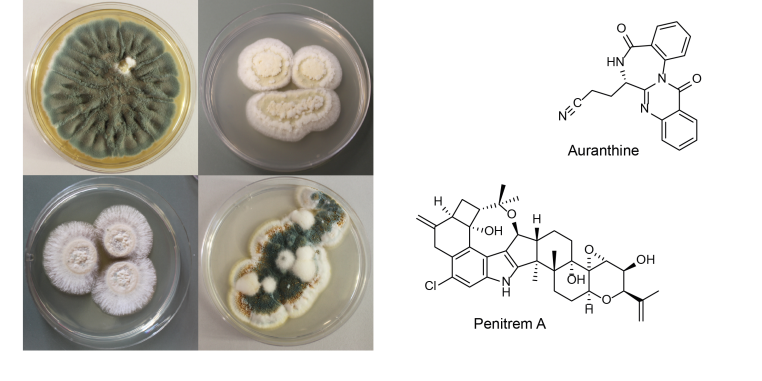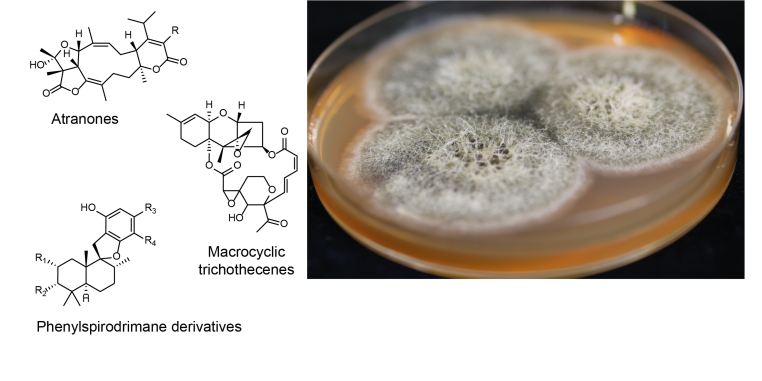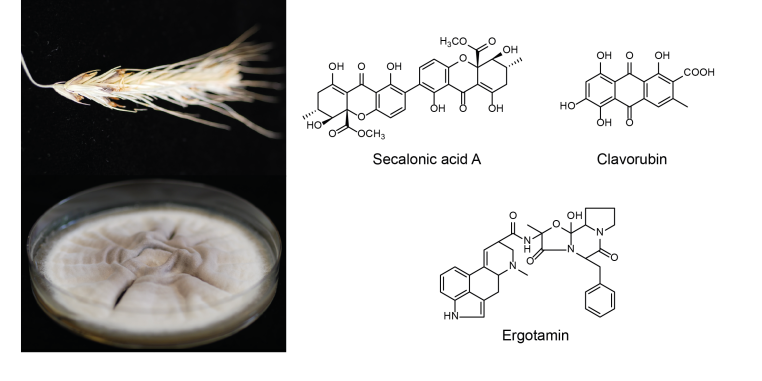













Fungi are characterized by a great diversity of species and grow almost everywhere. They are not only found in organic waste, but also in water-damaged buildings and food samples. A contamination of fungi can lead to high crop losses or diseases in humans.
In our Institute, we are interested in the indoor-fungi Stachybotrys sp., the ergot fungus Claviceps purpurea and the brush-mold Penicillium sp.. They are all able to produce secondary metabolites. These natural products are not only interesting because of their toxicity as mycotoxins rather their biological activity. The latter is important for the development of new drugs. Secondary metabolites are chemically non-related compounds that are not involved in normal growth, reproduction or development, but are beneficial for species interaction, protection and competition. The fungus is able to generate complex natural products from simple building blocks with the help of different enzymes. However, these enzymes are not always activated under laboratory conditions. With the help of molecular genetic methods, we are able to activate these enzymes. The focus of our group is the identification of silent gene clusters with the help of genome mining. After the identification, we modify genetically the genes to force the fungus to produce new metabolites. These metabolites are analyzed via different spectroscopy methods and NMR to elucidate the structure. Subsequently, these are checked for their biological activity.